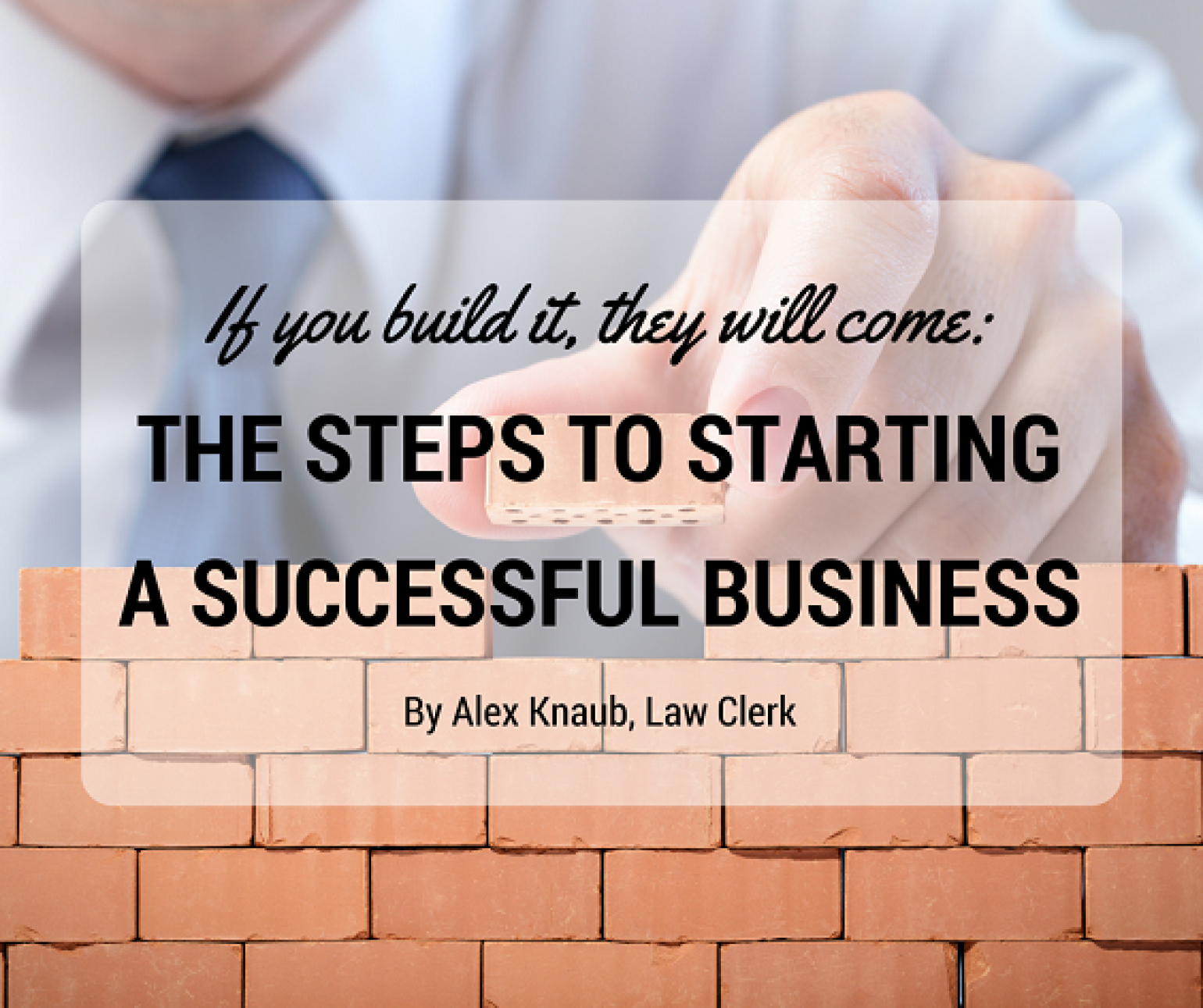If you build it, they will come: The Steps to Starting a Successful Business
By Alex Knaub, Law Clerk
This article was prompted by a frustrating conversation I had with one of my more-imaginative friends. Changing the names to protect the guilty (and the frustrating), leaves us with Steve Poppyseed.
Steve is a fine young man; a self-proclaimed “idea man.” The grandiose idea of “building a brand” has enraptured Steve, however I’ve been having trouble deciphering the specifics of his ideas. So far, the brand consists of Steve and only Steve. He calls me every so often to tell me of his progress, but lately his calls have become more frequent—and more frustrating.
Steve keeps me telling me that he is not good at writing, marketing, talking, merchandising, selling, websites, branding, press releases, raising capital, products, customers, or really anything else. That is why he is building a team.
Now Steve has built a business team and is attempting to press the team for ideas on what to do next. As the Business Law guy, I told Steve to sell something: a product or a service. His product ideas, unfortunately, are not quite there yet. Even so, Steve wants to do press releases about this great brand and wants venture capital to build it.
Steve wants a lot of things.
Stepping away from our crazy conversation has shown me that Steve hasn’t quite figured out the basics of building a business.
But that’s okay, Steve!
Fortunately for you, many successful businesses have been started on less. Unfortunately, however, there’s a lot of self-realization, hard work, planning, and problem solving that needs to be done before you can really get started with your successful business.
Let’s start with the very basics of your business plan…
1) Identifying a problem
Identifying a problem requires understanding problems.
To identify what the world wants, you must first realize what challenges people.
An entrepreneur solves a problem for himself; the solution becomes a business when enough people have the same problem, and the solution can be replicated.
It sounds fairly simple, but it’s not always as simple as I have made it out to be. The product solves a problem but finding the problem is the trick and making the solution elegant and replicable can be difficult.
2) Solving that problem through a product or service
Entrepreneurial Mad Libs:
Customer: “I wish I could [descriptive verb].”
Entrepreneur: “You can with [entrepreneur’s solution]! That’ll be [price]. Tell your [group of similarly situated people].”
An illustration shows how this works:
Customer: “I wish I could quench my thirst.”
Entrepreneur: “You can with Coca-Cola! That’ll be $1. Tell your friends.”
Customer: “I wish I could travel to work faster.”
Entrepreneur: “You can with a Lamborghini! That’ll be $2,395 per month. Tell your golf buddies.”
Customer: “I wish I could get from L.A. to New York in five hours or less.”
Entrepreneur: “You can with American Airlines! That’ll be $299. Tell your business associates.”
Customer: “I wish I could feel sexy.”
Entrepreneur: “You can with Chanel Perfume! That’ll be $80. Tell your sorority.”
Once you find that need and build a solution, the team will come.
3) Identifying potential customers
“If everyone is your customer, no one is your customer.”
Now that you’ve identified a problem and a solution, the next step is identifying a specific group of people who experiences this problem. Furthermore, this group of people must be reachable, wanting a solution, and willing to purchase a product or service.
This is the target market.
Once you’ve identified that market, you can begin identifying ways to reach them, and what you tell them once you’ve got their attention.
4) Reaching those customers
So we identified a problem. Check!
We identified who has this problem. Check!
We rolled out our solution. Check!
All that’s left is reaching them and teaching them how to solve their problem using our solution. This is the essence of marketing.
The basics of marketing are identifying the avenues of reaching your target market, delivering them information about their problem, and informing them of your solution. This message, if done correctly, is all packaged in your company’s image, or Brand.
5) Branding yourself
Branding is emotional associations created by your company’s image in the mind of customers. Examples of branding include your Name, Logo, Colors, Packaging, and Slogans.
Branding is important to starting a successful business because it’s the message and image that you’re delivering to your customer, like product-quality and company-values
Good branding is memorable, and keeps your customer coming back by causing the mental association of an emotion without using the product itself.
To recap:
We’ve identified a problem;
Solved the problem in an tasteful, replicable way;
Figured out the target group of people who would benefit from this solution;
Built a plan for reaching our target market;
And created a memorable, easily identifiable brand that is original and triggers emotions.
These are the basics to creating a successful brand of your own.
Now Steve, next time we have a phone conversation about this brand your building, I hope you’ll have tackled some of these steps. The road ahead is long and treacherous, but with some decent planning, problem solving, and creative thinking, just about anyone can start a successful brand that people flock to.
All you’ve gotta do is build it, first.




